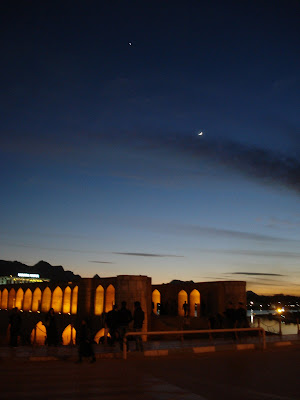Islamic Geometric Patterns

The English translation of Eric Broug’s nice booklet on Islamic geometric patterns has just been published by Thames and Hudson. Islamic geometric patterns may contribute to the impression of a haven of tranquility and relaxation in paradise gardens or may invite for meditation, contemplation and prayer, for example in a mosque. Complexity may create a level of amazing and magnificent beauty. I have long been fascinated of the dazzling tessellations as one main artistic characteristic in Islamic Art. But how did they create them?
It is clear that medieval artisans used a compass and a straightedge. According to modern theories the production of a rather limited set of girih tiles is considered, too. Broug makes it easy on one hand to comprehend the construction step by step. But he also gives an immediate impression of the incredible skills necessary to really create a piece of art. The CD provides further examples and also shows the real buildings in the Islamic world where these marvels can be found.
Lacking compass and straightedge nowadays, I immediately tried to use Powerpoint for the first few squared patterns; and succeeded within minutes.
It is clear that medieval artisans used a compass and a straightedge. According to modern theories the production of a rather limited set of girih tiles is considered, too. Broug makes it easy on one hand to comprehend the construction step by step. But he also gives an immediate impression of the incredible skills necessary to really create a piece of art. The CD provides further examples and also shows the real buildings in the Islamic world where these marvels can be found.
Lacking compass and straightedge nowadays, I immediately tried to use Powerpoint for the first few squared patterns; and succeeded within minutes.




Comments